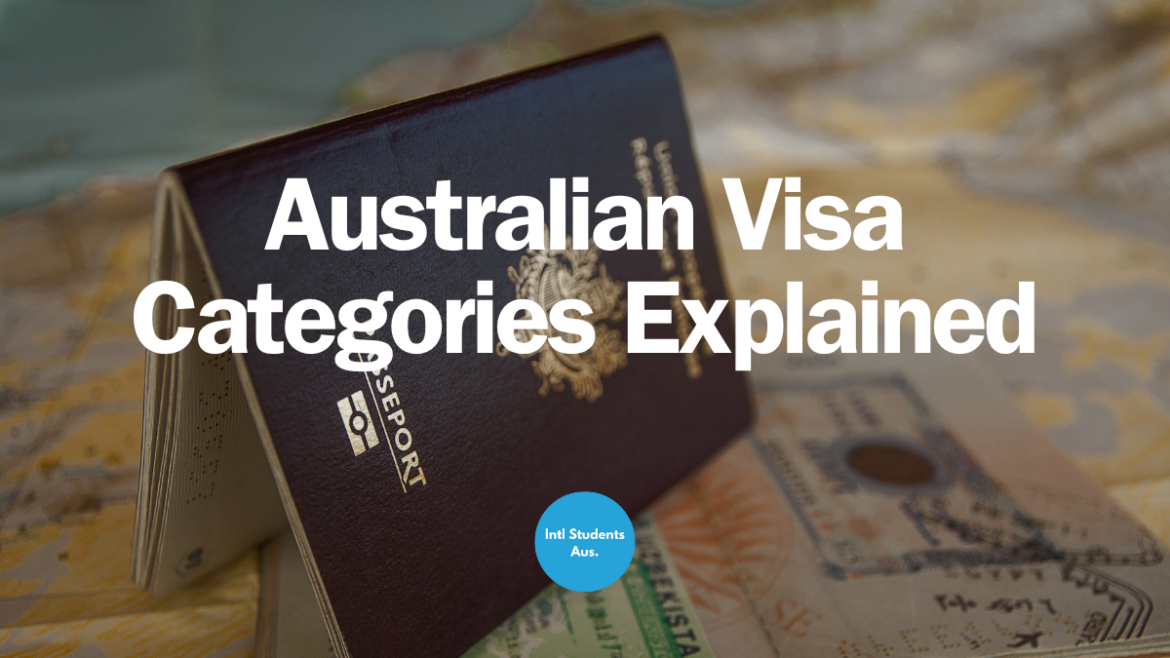Have you ever dreamed of living, working, or studying in Australia? Understanding the Australian visa types is key to realizing those dreams. With numerous visa types and subclasses available, it can be overwhelming to navigate through the options.

That’s why we’re here to help simplify the process for you. This article will provide a comprehensive guide to the different Australian visa types and subclasses, explaining their eligibility criteria, application processes, and important considerations.
Knowing the right visa for your situation is crucial whether you’re a skilled worker, a student, a family member, or an entrepreneur. So, let’s dive in and explore all you need to know about Australian visas.
Different Australian Visa types
Understanding the Australian visa types is crucial if you want to work, study, or live in Australia. There are different types of visas, each with its own set of rules and requirements. Let’s start by looking at work visas:
Work Visas
Work visas are for people who want to work in Australia temporarily or permanently. Here are some of the main ones:
| Visa Type | Description |
| Temporary Skill Shortage Visa (Subclass 482) | This visa allows skilled workers to come to Australia and work for an approved employer. To be eligible, you must have a job offer from an employer who can’t find a suitable Australian worker for the job. |
| Employer Nomination Scheme Visa (Subclass 186): | This visa is for skilled workers nominated by an Australian employer to work in a skilled occupation. To apply, you must meet certain age, skills, and English language requirements. |
| Skilled Employer Sponsored Regional Visa (Subclass 494) | This visa is for skilled workers who have been nominated by an employer in a regional area of Australia. You must have a job offer in a designated regional occupation and meet certain other requirements. |
| Designated Area Migration Agreement (DAMA) Visa (Subclass 482 to Subclass 186): | DAMA visas are for skilled workers whom an employer has sponsored under a DAMA. These agreements allow employers in specific regions of Australia to sponsor skilled workers for jobs that can’t be filled locally. |
| Training Visa (Subclass 407) | This visa allows people to come to Australia for workplace-based training to improve their skills. To apply, you must have a sponsor and meet certain other requirements. |
| Working Holiday Visa (Subclass 417) & Work and Holiday Visa (Subclass 462) | These visas are for young people who want to travel and work in Australia for up to a year. You must be aged between 18 and 30 (or 35 for some countries), meet certain educational and financial requirements, and have a passport from an eligible country. |
| Temporary Work (Short Stay Specialist) Visa (Subclass 400) | This visa allows people to come to Australia for short-term, highly specialized work. You must have a job offer and meet certain other requirements to apply. |
Each work visa has its own eligibility criteria and application process. It’s important to read the requirements carefully and make sure you meet them before applying. You may also need to provide supporting documents, such as proof of qualifications or work experience, as part of your application. Working with an immigration agent or lawyer can help you navigate the process and increase your chances of success.
Skilled Visas
| Visa Type | Description |
| Independent Visa (Subclass 189) | These Australian Visa types are for skilled workers not sponsored by an employer, a state, or a family member. Applicants must submit an Expression of Interest (EOI) and be invited to apply based on their points score and occupation on the Skilled Occupation List. |
| Skilled Nominated Visa (Subclass 190) | This visa requires nomination by a state or territory government. Applicants must also submit an EOI and be invited to apply based on their points score and nomination by a state or territory. |
| Skilled Regional Visa (Subclass 491) | Designed for skilled workers who want to live and work in designated regional areas of Australia. Like other SkillSelect visas, applicants must submit an EOI and receive an invitation to apply. |
| Permanent Residence (Skilled Regional) Visa (Subclass 191) | This visa provides permanent residency to holders of the Subclass 491 visa after meeting specific residence and work requirements in designated regional areas. |
| Graduate Skilled Visa (Subclass 485) | For recent international graduates from Australian institutions. It allows them to live, study, and work in Australia temporarily after completing their studies. |
| Global Talent – Independent program (GTI) | A visa program aimed at attracting highly skilled individuals in targeted sectors to contribute to Australia’s economy. Applicants must demonstrate an exceptional track record in their field. |
To apply for Australian Visa types like skilled visas, applicants must first submit an Expression of Interest through SkillSelect. If invited to apply, they must lodge a visa application within the specified timeframe and meet all eligibility requirements. Key requirements often include having relevant skills and qualifications, meeting health and character standards, and fulfilling specific criteria for the chosen visa subclass. It’s essential to carefully follow the application process and provide accurate documentation to increase the chances of a successful outcome.
Student Visas:
| Visa Type | Description |
| Subclass 500 Student Visa | This is the primary visa for international students who wish to study full-time in a registered education institution in Australia. It covers primary, secondary, tertiary, vocational education, and English Language Intensive Courses for Overseas Students (ELICOS). |
| Subclass 590 Student Guardian Visa | This visa allows the guardian of an international student who is under 18 years of age to accompany them to Australia while they study. |
| Subclass 485 Temporary Graduate Visa | This visa allows international students who have recently graduated from an Australian educational institution to work and live in Australia temporarily after completing their studies. |
| Subclass 407 Training Visa | This visa allows individuals to come to Australia on a temporary basis to participate in occupational training or professional development. |
| Subclass 482 Temporary Skill Shortage Visa (formerly 457 visa) | While not specifically a student visa, this visa allows skilled workers to come to Australia temporarily to work for an approved sponsor. Some international students may transition to this visa after completing their studies if they find an employer willing to sponsor them. |
To obtain a student visa for Australia, you must first secure admission to a registered Australian educational institution and receive a Confirmation of Enrollment (CoE) for your chosen course. You’ll then need to apply for the student visa online through the Department of Home Affairs website.
Important considerations for students applying for a student visa include meeting the Genuine Temporary Entrant (GTE) requirement, demonstrating sufficient funds to cover tuition fees and living expenses, maintaining Overseas Student Health Cover (OSHC) throughout your stay, and complying with visa conditions, such as attending classes and making satisfactory academic progress.
Family & Spouse Visas:
If you have family in Australia or are married to an Australian citizen or permanent resident, there are visas available for you:
| Visa Type | Description |
| Partner Visa (Subclass 820/801 & 309/100) | For spouses or de facto partners of Australian citizens or permanent residents. |
| Prospective Marriage/Fiance Visas (Subclass 300) | Intended for individuals engaged to be married to an Australian citizen or permanent resident. |
| Child (subclass 802) | This visa allows dependent children to live in Australia permanently with their parent who is an Australian citizen, permanent resident, or eligible New Zealand citizen. Adoption (subclass 102): This visa allows children adopted outside Australia to live in Australia permanently with their adoptive parents. |
| Remaining Relative visa (subclass 115) | This visa allows individuals to live in Australia permanently if they have no near relatives outside Australia and are sponsored by their remaining relative who is an Australian citizen, permanent resident, or eligible New Zealand citizen. |
| Aged Dependent Relative visa (subclass 114) | This visa allows elderly dependent relatives to live in Australia permanently if they are financially dependent on their relative who is an Australian citizen, permanent resident, or eligible New Zealand citizen. |
To apply for family and spouse visas, you must meet specific requirements and go through the application process, which involves providing evidence of your relationship to the sponsor and meeting health and character criteria.
Business Visas:
For individuals interested in business and investment opportunities in Australia, various visa options are available:
| Visa Type | Description |
| Business Talent Visa (Subclass 132) (Closed) | Previously offered for high-calibre business owners, investors, and entrepreneurs. |
| Business Innovation & Investment Visa | Provides pathways for business owners, investors, and entrepreneurs to establish or develop businesses in Australia. |
Eligibility for business visas often depends on factors such as business experience, investment funds, and proposed business plans.
Expert Guidance:
Here are some expert’s tips for Australian Visa types:
- Seeking expert guidance for visa applications is crucial for a smooth and successful process.
- Immigration rules and regulations can be complex, and professional assistance can ensure the accurate completion of paperwork and adherence to deadlines.
- Professionals such as migration agents or immigration lawyers have the expertise to navigate through the intricacies of the Australian visa system.
- By consulting with experts, applicants can receive personalized advice tailored to their specific circumstances.
- Contacting professionals for assistance with their Australian visa journey can save time, reduce stress, and increase the likelihood of a positive outcome.
Conclusion:
Understanding the diverse range of Australian visa types and subclasses is essential for individuals planning to visit, work, study, or settle in Australia. Each visa category has specific eligibility criteria, application processes, and considerations.
By familiarizing themselves with the available options and seeking professional guidance when needed, applicants can confidently increase their chances of a successful visa application and embark on their Australian journey.


